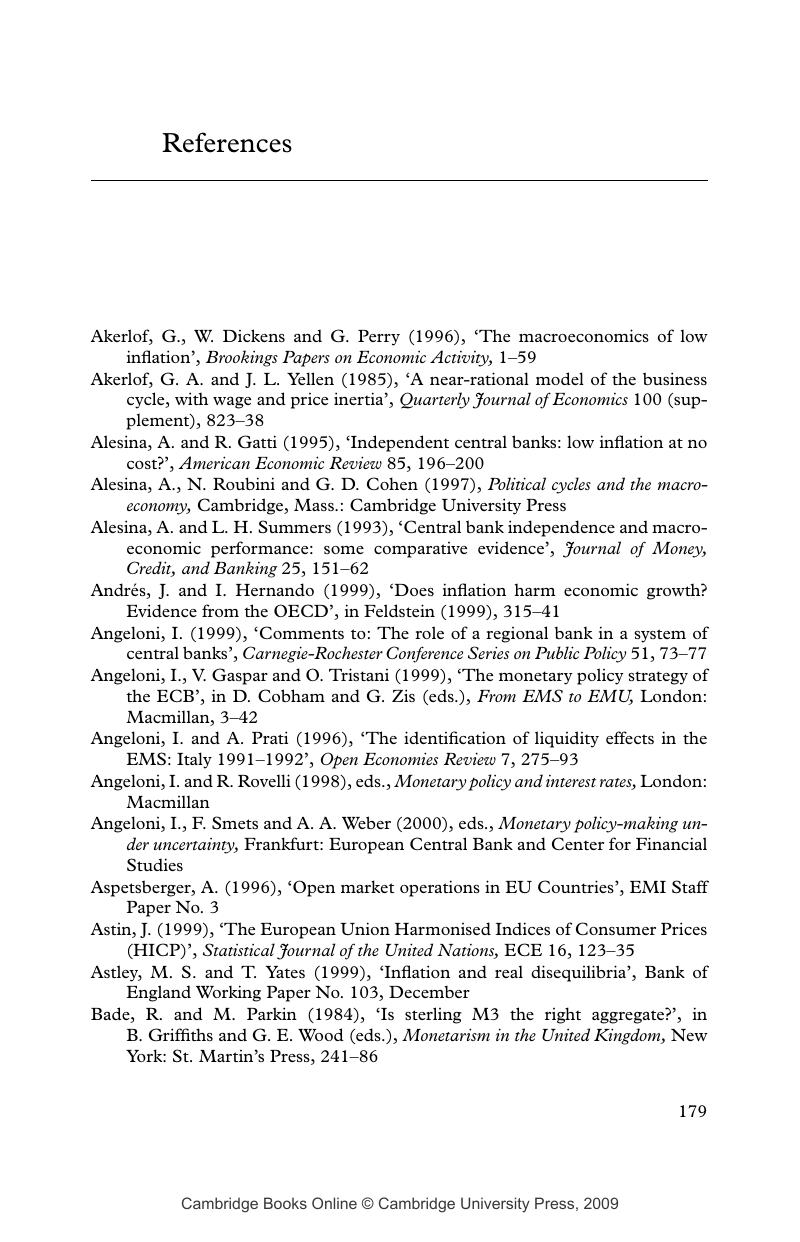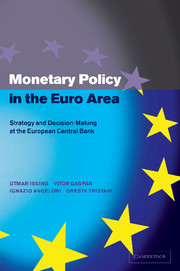Book contents
- Frontmatter
- Contents
- List of figures
- List of tables
- Acknowledgements
- Introduction
- 1 Money, output and prices: the scope of monetary policy
- 2 Monetary policy making: strategies and rules
- 3 The euro area: an overview
- 4 The ECB strategy: defining price stability
- 5 The role of money
- 6 A broadly based assessment
- 7 The ECB strategy: an overall view
- 8 The operational framework
- 9 Accountability and transparency
- 10 The single monetary policy in 1999
- Appendix Excerpts from ECB external communications to the press
- References
- Index
- References
References
Published online by Cambridge University Press: 22 September 2009
- Frontmatter
- Contents
- List of figures
- List of tables
- Acknowledgements
- Introduction
- 1 Money, output and prices: the scope of monetary policy
- 2 Monetary policy making: strategies and rules
- 3 The euro area: an overview
- 4 The ECB strategy: defining price stability
- 5 The role of money
- 6 A broadly based assessment
- 7 The ECB strategy: an overall view
- 8 The operational framework
- 9 Accountability and transparency
- 10 The single monetary policy in 1999
- Appendix Excerpts from ECB external communications to the press
- References
- Index
- References
Summary

- Type
- Chapter
- Information
- Monetary Policy in the Euro AreaStrategy and Decision-Making at the European Central Bank, pp. 179 - 194Publisher: Cambridge University PressPrint publication year: 2001



